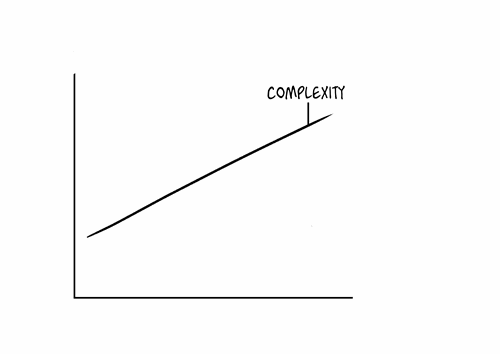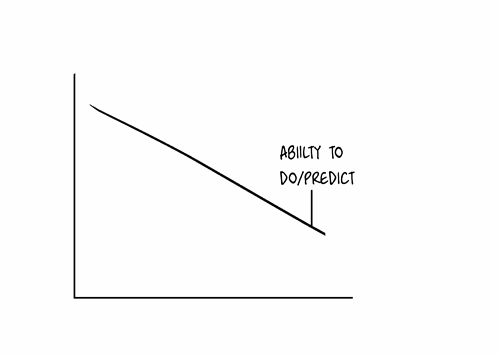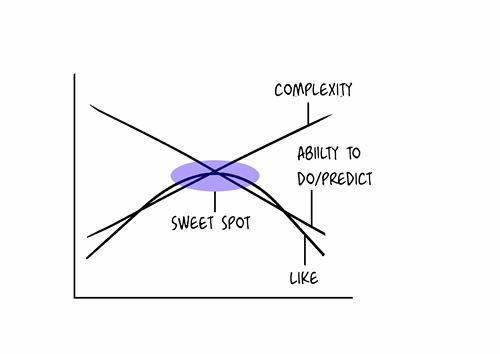In everyday conversation, we often describe the brain as a computer. For example, people might say that they will "save something on the hard drive" instead of saying that they will remember something.
However, the brain is NOT a computer and doesn't even attempt to be. It would much rather be a crystal ball, looking into the future.
Its primary purpose is to handle situations that could occur in the future. Knowledge of the past, i.e., memories, is only important to the extent that it can perhaps help us make better decisions in the future.
Traffic Jam in Sri Lanka
In 2014, I went on holiday to Sri Lanka with my wife and our two children. For 12 days, we traveled around the island in a rented car. We also hired a local driver, Chanaka, to drive us, as we didn't dare to navigate the very different and hectic traffic. The roads were bad, the signs were inadequate, people and animals were on the roadway, and no one obeyed the traffic rules.
At one point, I asked our driver how he managed to drive in this chaos. He replied that it wasn't chaos, and that he could predict where obstacles were going. He said that both people and animals would move out of the way when a car approached. People always took the shortest route to escape danger, and cows never backed up. The only thing to be slightly wary of was dogs. Dogs were unpredictable, but he didn't seem to worry too much about the occasional dog getting in the way. He wasn't unique; everyone drove more or less like this. Although we sometimes sat with our hearts in our throats, no one was hurt during the time we drove with him, and we didn't see anyone else getting hurt in traffic either.
Aside from the situations that Chanaka could consciously formulate, I'm certain he also had an intuitive understanding of predicting a wide range of other situations that could occur in traffic.
Predictive coding
Can you imagine how Chanaka learned that you couldn't trust dogs in traffic? You can almost picture it when he first experienced a dog moving in a way that didn't fit his mental model.
The theory of predictive coding states that in a given context, we have an expectation of what will happen shortly, and we continually update our expectation based on the sensory impressions we receive. Scientists talk about statistical learning, as the brain builds its models of the world based on our previous experiences. If an infant has experienced that the pacifier always falls to the ground when thrown from the high chair, the infant's brain will develop a statistical model that says pacifiers fall to the ground in 100% of cases, and therefore it would be statistically unlikely for a pacifier to suddenly fall upwards.
If you find that your prediction does not hold up, you experience what is called a prediction error. The brain will then try to update its model of the world, so that the prediction error no longer occurs. So, learning is what happens when the brain corrects its understanding of the world to avoid a future prediction error.
This mechanism is supported by the fact that we are rewarded with dopamine in our reward system when we can predict events. We simply like to be able to "figure it out", and we get bored if what happens is too predictable, because then we do not learn anything. On the other hand, we get uncomfortable if we experience too many prediction errors.
So our brain is simply coded to like being presented with suitable challenges; not too easy and not too hard.
The Inverted U
Peter Vuust is a jazz musician and brain researcher, and head of the Center for Music in the Brain, which researches how music affects the brain. One of the most interesting aspects of the research Peter Vuust carries out and conveys is that it can also teach us about how the brain works in general.
I attended a lecture with Peter Vuust, where he described an experiment that beautifully shows how we react to prediction errors. In the experiment, different subjects are exposed to different rhythms with increasing complexity as illustrated below. (NB. The following illustrations do not show the actual experimental data but merely visualize the principles).

When you listen to music, it's also about being able to build a mental model of what's going to happen. When you listen to a rhythm, the mental model will typically enable you to predict what happens in the rhythm and reproduce or "follow" the rhythm - if it's not too complex.
Unsurprisingly, our ability to predict, and thus reproduce, rhythms decreases as complexity increases, and the number of prediction errors increases.

If you ask the subjects what they prefer, the graph shows an inverted U where the two graphs meet.

The area where we like the task the most is called a 'sweet spot'. It lies where the difficulty is adequately high but not so high that we struggle too much to predict what's happening.
You can read more about music and the brain in Peter Vuust's highly recommended book "Musik på hjernen".
Would you like to learn more?
Perhaps you might be interested in our Course in (Digital) Didactics - Learn to Design Good Learning.
In the course, you learn to develop learning that captures your recipients' attention and works with their motivation to learn. The course is also for you who teach in a classroom or online and need a professional booster.
Do you want to learn more on your own?
If you are interested in reading more about motivation and learning, these articles might interest you.
- Self-Determination Theory: The most important theory on learning.
- Forced navigation - how NOT to design e-learning.
- Flick 2 learn. Why Interactive elearning is NOT always exciting
If you want to know more about digital learning and e-learning, you can start with our Elearning FAQ.
If you're looking for help with e-learning development, or if you'd like to take a course on Elearning, where you learn to create e-learning yourself - we can also help you.

 If you found this blog post interesting, you might also enjoy Tomas' book (in danish only)
If you found this blog post interesting, you might also enjoy Tomas' book (in danish only)